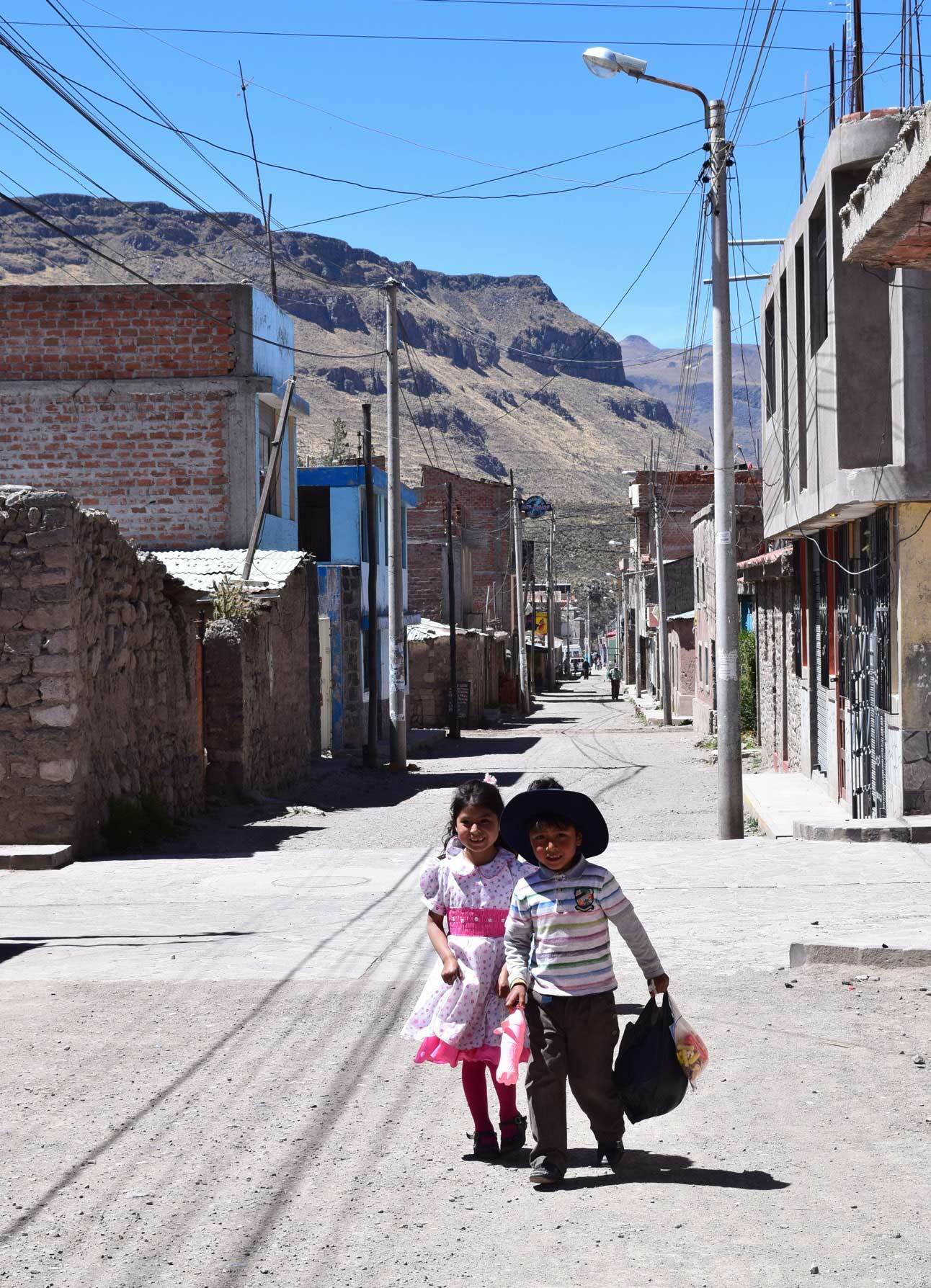Promoting Free Societies
Leveraging Indices For Free Enterprise Policy Reform Project


The Problem
Peru is a country poised for a larger role on the global playing field. Formerly home to the oldest civilization in the Americas, dating back to the 32nd century BC, Peru has most recently garnered attention as one of the fastest growing economies in Latin America. Diverse geography has provided an abundant range of natural re-sources to drive economic development, from mining to fishing to agricultural products. But the features that deliver a broad scope of industries also provide social strains.
Rapid economic growth of the past two decades has drawn about a third of the approximately 30 million Peruvians to Lima, the country’s capital city. However, a large majority of the population is spread out across the country, from the coast, to the mountains, to the Amazonian rainforest. This makes it difficult to connect all citizens to the national economy due to underdeveloped infrastructure. While there are efforts afoot to bring sanitation, medicine, telecommunications, and other elements of modern day living to rural communities, the country is struggling to balance its development and provide opportunity for all.
The structural and cultural barriers to development have resulted in opposing political narratives. In the 1990s Peru began to pursue an approach of economic liberalization, ushering in investment and technocratic management of the country’s economic indicators. The same period saw stable inflation rates, steadily growing GDP, and an increasing number of trading partners. Some current political parties draw on the country’s economic performance to advocate for increased liberalization. Yet others focus on the resultant inequality and press for schemes of redistribution, much in line with South American styled socialism. The result of this philosophical clash will significantly influence the country’s future.
Contribuyentes por Respeto
Contribuyentes por Respeto (CpR) was found-ed in 2012 by a small group of lawyers, economists, and businessmen, to defend the right of Peruvian taxpayers to receive quality state services in exchange for their taxes. This much needed advocacy came at a time when, as Peru developed, the central government’s coffers began to grow.
Due to a lack of understanding of appropriate development policy, funds were underutilized. When monies were disbursed, billions of dollars were mismanaged. CpR stepped in to pursue the answers of a simple question, “How can we unleash that investment to grow the country for all its citizens?”
Juan José García, one of CpR’s principal researchers who has been with the organization from the beginning, explained, “At the core of many problems in Peru are faulty institutions, which provides a ripe opportunity to conduct research and identify solutions.” Garcia attributes his passion for employing free markets to solve problems to his experience working in the stock market when he was a teenager, along with his university studies, where he discovered the Austrian school of economics. He is one of CpR’s 4 full-time employees.
CpR was founded in 2012 . . . to defend the right of Peruvian taxpayers to receive quality state services in exchange for their taxes.
Due to its size, the organization must run lean and efficiently, which has required organizational strategy. This has been provided by José Ignacio Beteta, who joined as CpR’s president two years ago, coming with a background in leading other non-profits. He expounded, “On one side, we have to be very prudent with resources, on the other we have to take some risks to leverage for success in the future.”
One way they’ve navigated that balance is partnering with another non-profit to share back-office support to coordinate account-ing, human resources, taxes and paperwork for both organizations. Garcia noted, “As a researcher, these changes have dramatically freed up my time. I used to get stuck crafting Facebook messages. Now I can focus exclusively on my research.”

In addition to its organizational acuity, CpR benefits from exercising its identity as one-of-a-kind organization. As the only taxpayers’ association in Peru, being independent from both government and business sectors, the media has developed a deep interest in its work and perspective, leading to over hundreds of mentions across radio, television, print, and online outlets. This widespread publicity has led to invitations by policymakers to weigh in on policy developments and positioned CpR for effective advocacy moving forward.
CpR’s broad goal is to enhance free enterprise in Peru. All their research and analysis revolves around the interaction of the public and private sectors, and how that impacts the daily lives of Peruvians. Being small and flexible, the team employs a range of tools to accomplish its mission, including original research, partnerships, and even cartoons.
As CpR strategized how to craft their LIFE project, they cross-referenced current government initiatives, Peru’s areas of weakness in global indices, their own scholarly aptitudes, and hot topics in society. What emerged as the nexus of these areas was one element: infrastructure. Specifically, they launched an “Infraestructura para Todos” (“Infrastructure for All”) campaign, under which they decided to pursue policy changes in tele-communications and water management, along with several smaller areas, to produce marked improvement in the World Economic Forum’s Global Competitiveness Index.
Infrastructure is the skeleton upon which the economy is built. Typically, government plays the central role in infrastructure development. This is especially true in Peru, as its relatively undefined institutions have prevented the materialization of robust market-based provision-ing of public goods.

This gives rise to a catch-22 because the most problematic factor for doing business in Peru, according to the World Economic Forum, is inefficient government bureaucracy. Further-more, corruption and the inadequate supply of infrastructure are the third and fourth most problematic factors.
Population in Lima has increased by 50% over the past twenty years. Making matters worse, with that expansion the public investment dol-ars centralized there, further leaving the rural areas out of the development initiatives.
CpR’s goal was to transform this situation by freeing up latent capital and unleashing the solution-seeking power of the private sector to drive development. “We started this project try-ing to release Public Private Partnerships (PPP),” said Beteta. PPPs are intended to blend the best of both worlds: drawing on public funding collected via taxes to provide public goods more efficiently through the market process.
Results
CpR has proven to be an effective taxpayer advocate. Despite the series of major challenges Peru has faced in the past few years, the country has seen improvements in its rankings in the World Economic Forum’s Global Competitiveness Report. The infrastructure category specifically increased in individual areas like mobile telephone subscribers and quality of electricity supply.

Regarding telecommunications, the central government has become supportive of CpR’s policy recommendations, resulting in the Ministry of Telecommunications traveling with CpR to advance their policy education around the country. So far, they have visited nearly 30% of the regions. They also gained partnerships with civil advocacy organizations, multiplying their impact. Their boots on the ground campaign to advocate for expanding the cellular network, paired with their in-depth analysis of bureaucratic barriers in the industry, has contributed to Peru’s improvement in the number of mobile phone subscribers.
CpR’s research and advocacy related to water management, and the associated triage of the country’s views of PPP, have contributed to Peru’s ongoing discussion of this issue. Importantly, the government passed a law in 2016 that formally allows private companies to bid on water management projects.